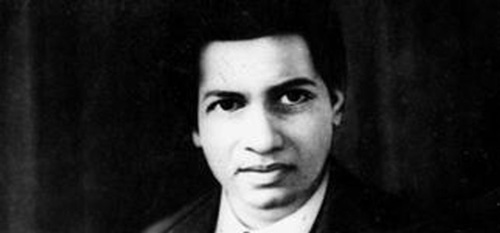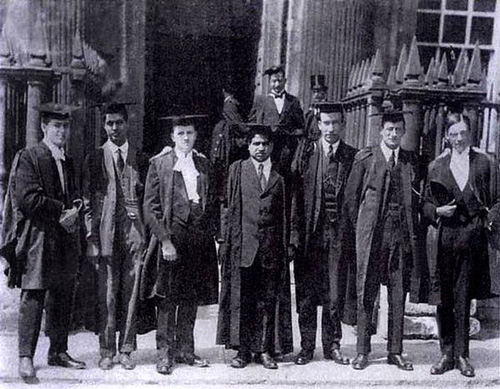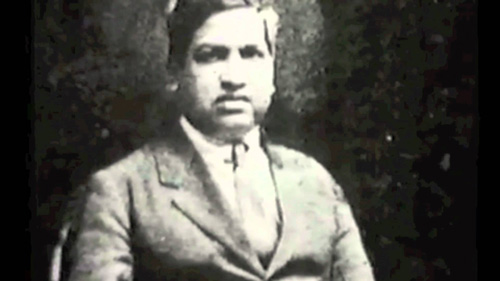- 10.9Kshares
- Share
- Tweet
- Facebook Messenger
Very soon, Ramanujan will be the talk of the town with the Indian release of his Dev Patel starrer biopic The Man Who Knew Infinity on April 29, 2016. For now, he remains as one of the long forgotten legends of our country.
Srinivasa Ramanujan was a man of pure genius. The Indian math wizard took the world by surprise during the 19th century with his path-breaking mathematical discoveries. He is recognized worldwide for his contributions in continued fractions, number theory, and of course, the infinite series – the most enigmatic part about him remains the fact that he was completely self taught, a genuine autodidact. Ramanujan, who is still a legend in Cambridge University, died on April 26, 1920.
The 32 year old genius, a truly gifted academician died cheap, suffering from tuberculosis. Let’s find out what happened to the Indian boy genius of whom, we have almost forgotten.
1. The dietary compromise in England

It was 1914 and the War was in full swing. Consequently, England was cut short of the customary Indian comestibles that formed a staple diet of the Brahmin mathematician. However, Ramanujan maintained his dietary discipline with rigidity even if it meant the inadequate intake of food. This, along with erratic research hours carved the way to the breaking of his health gradually.
2. When he was finally to a hospital admitted in 1917

For three years, Ramanujan worked his magic in Cambridge which also earned him a PhD in 1916 for his contributions in the subject of highly composite numbers. However, he had given too much to his research in the last few years and his body was giving out. In 1917, he was , for the first time, admitted to a Nursing Home in Cambridge and it wasn’t before the fall of 1918 that he showed some signs of improvement.
3. When he returned to India

Physicians assumed that the exposure to the familiar climate in India would be advisable for Ramanujan. Therefore, in 1919, with the war being over, Ramanjuan headed towards his motherland, India. Unfortunately, when he reached Mumbai on March 27, 1919, there was a relapse of his illness. The familiarity of his native climate wasn’t enough to keep Ramanujan’s health from deteriorating. He survived only for another year.
4. He was all “skin and bone” when he came to India

His slight gain in weight ushered hope among his colleagues and doctors in England. However, when he reached India in 1919, his family in India were quite shocked to see his broken health. Ramanujan’s clothes now hung lose from his body; he was showing signs of chronic fever and had started coughing phlegm.
5. Was it really tuberculosis?

From November, 1917 to the summer of 1918, Ramanujan was being treated at the Matlock House Sanatorium, Matlock, Derbyshire. In February, 1918, Cambridge mathematician, G.H. Hardy revealed some interesting facts about Ramanujan’s illness in a letter to his friend and colleague, Sir Joseph Thomson.
He had mentioned that although, tuberculosis has been proclaimed as the cause of his ailment, there had been no signs of crude lung trouble such as coughing or spitting. In fact, Dr. Kincaid, who ran the institute at that time, was himself, doubtful about the diagnosis, according to the letter.
6. Was it a diagnosis gone severely wrong?

Long after Ramanujan’s death, further probe into his untimely demise indicated that the cause of his ailment was hepatic amoebiasis instead of tuberculosis. In 1918, amoebiasis was considered to be a “tropical disease”. D.A.B Young, in his 1994 journal, Notes and Records of the Royal Society of London, opined that the specialists treating Ramanujan in England had limited knowledge regarding the treatment of amoebiasis and neither did they have any knowledge of Ramanujan’s history of dysentric upset.
7. Was Ramanujan suicidal?

In Notes and Records of the Royal Society of London, Young had also mentioned that amoebiasis is an ailment which may upset the mental equilibrium of the patient, often leading them into depression. Quite shockingly, he had mentioned in his journal that Ramanujan had once, tried to end his life by jumping from station platform in front of an underground train in London.
The credibility of the story remains murky as according to Young, the account of the incident owes it’s origin from story narrated by Hardy at a dinner party 1936. It is said that Royal Society of England hushed the incident up as suicide was considered a criminal offence in England during those days.
96 years after the demise of one of the greatest mathematicians of the world, we can’t help but ponder if Ramanjuan didn’t have to die at 32 had he been diagnosed better.
- 10.9Kshares
- Share
- Tweet
- Facebook Messenger




